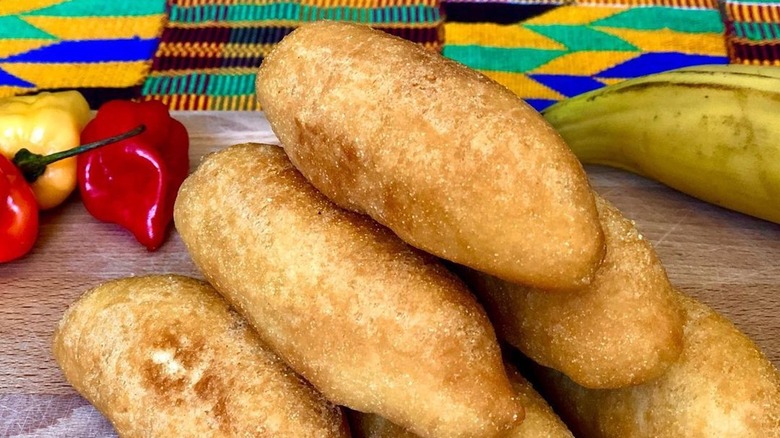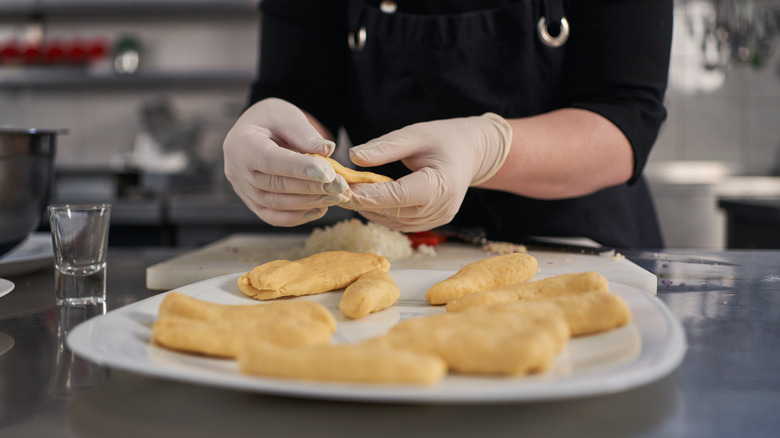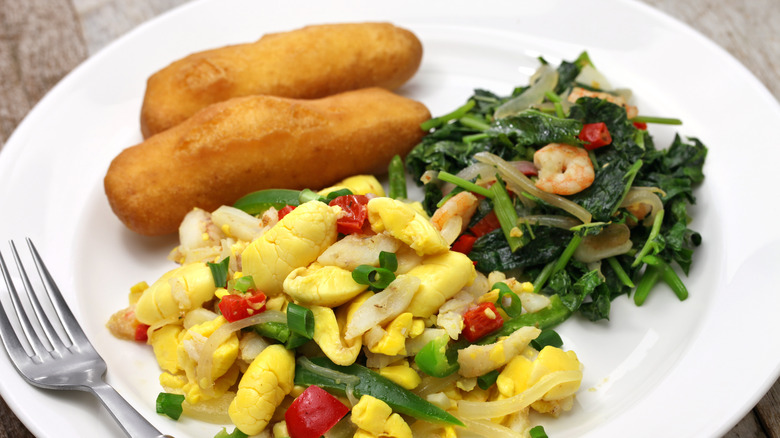What Makes Jamaican Fried Dumplings Unique?
It seems like every culture has its version of the dumpling. From Chinese bao, wontons, or jiaozi (better known to Americans as potstickers) to Italian ravioli and tortellini to Polish pierogis — people from all over the world have found a way to enjoy dumplings. The Caribbean is no exception.
Jamaican food is a rich, varied cuisine that serves as one of the world's foremost examples of fusion, influenced by a blend of dozens of cultures (Taino, African, Spanish, English, Irish, French, Portuguese, Chinese, Indian — it's a long list) that have been part of the island nation's history. The fried dumplings found in Jamaica are unique in that one of the core ingredients is cornmeal. One of the most popular Jamaican fried dumplings, festival, stand out even further from cornmeal dumplings found in other parts of the world. First, because they offer both savory and sweet elements, and second because they're shaped differently than most other dumplings.
Festival are distinct in both flavor and appearance
The shape of festival differ from other dumplings in that they are formed into long ovoids, vaguely like cigars. This is distinct from the majority of non-cornmeal dumplings (and even from cornmeal-based dumplings found in other regions, like the hush puppies of the Southern United States). Other dumplings tend to either come in round shapes (like bao, Jewish knishes, or Mongolian buuz), or crescents (like pierogis, jiaozi, gyoza, or empanadas). Another region that produces longer dumplings is Latin America, with tamales and Puerto Rican pasteles being excellent examples. But unlike those two, festival don't feature any type of leaf wrapping.
The flavor combination is the other main reason festival stand apart from many other dumplings. Typically festival only require a handful of dry ingredients: flour, cornmeal, sugar, baking powder, and salt. These are mixed with water, milk, or a combination of the two. Due to the amount of sugar used, festival offer both savory and sweet elements but are typically described as mildly sweet (this, of course, varies with family recipes). The slightly sweet flavor also makes them a great accompaniment to fiery Jamaican foods like jerk chicken, providing an excellent balance of flavors — as you potentially use them to soak up the succulent jerk sauce.
Festival are uniquely, indisputably Jamaican
The origins of festival come from the period in the 18th century when enslaved Africans in Jamaica were given a weekly ration of both cornmeal and salted fish. This led to the creation of a variety of cornmeal-based dishes — and the fact they're typically served alongside fish. Festival is no exception, as it's usually served alongside either escovitch fish (fried fish with pickled vegetables on top) or saltfish (dried, salted cod typically served with a red fruit known as ackee). You will, however, sometimes also see it alongside jerk chicken, proving that there's no bad time for festival. Although it should be noted that they're best served warm, and eaten on the same day as they're made.
The unique shape and sweet-salty flavor combo make festival quite unlike any other type of dumpling you'll find anywhere else on the globe. Give cooking them a try sometime; you won't be disappointed.


